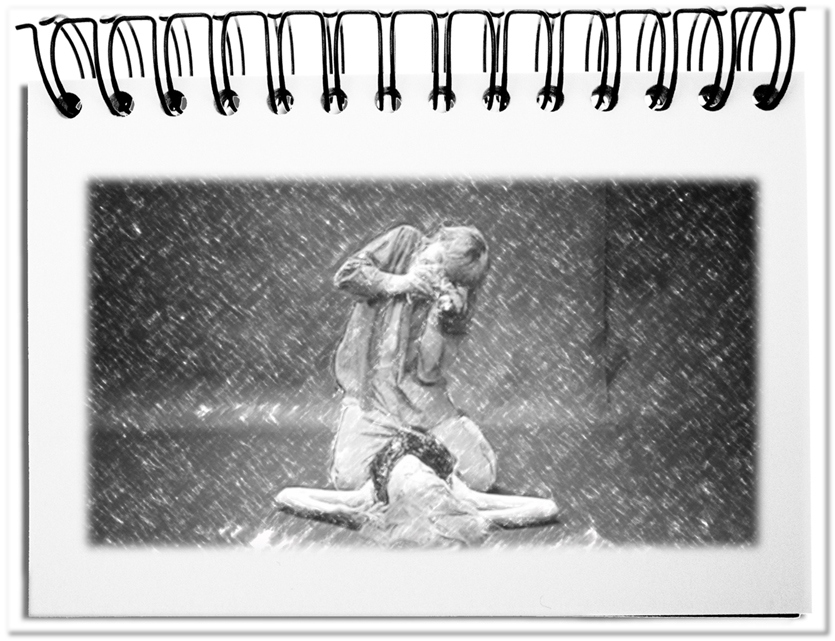Was treibt uns an? Was reißt die Kollegen mit? Diese Fragen stellen sich jeden Tag. Der Blick in einen selbst liefert dabei nur eingeschränkt Antworten. Nehmen wir als Beispiel den Fotografen Thomas in dem Film Blow-up. Er ist in dem gesamten Film getrieben von Gestaltungswillen. Dieser Künstler sucht zwanghaft ohne Unterbrechung das nächste Bild, was aus ihm den anschaulichen Prototyp für intrinsische Motivation macht.
Von einer Arbeit so gefesselt zu sein, dass man das Gefühl für die Zeit oder die Umwelt verliert, erfordert intrinsische und/oder extrinsische Motivation. Der Unterschied zwischen den beiden ist nur die Frage, wo der Impuls für das persönliche Engagement herkommt. In dem einen Fall aus sich selbst heraus. In dem anderen Fall wird der innere Antrieb durch externe Einflüsse ausgelöst. Die schließlich treibende Kraft steckt in einem selbst.
Intrinsische Motivation
Idealerweise entsteht der Beweggrund etwas zu tun in einem selbst drin – was ich will, wann ich will, wo ich will.
- Es handelt sich zum einen um intrinsische Prozessmotivation. Dabei strebt man, nur aus Spaß an der Sache an sich, bestimmte Tätigkeiten oder Aktionen an. Die Handlung ist nicht mehr Mittel zum Zweck, sondern wird zum Selbstzweck. Es ist Belohnung genug, sich mit der Sache beschäftigen zu können. Die besten Beispiele sind die vielen Künstler, die zu Lebzeiten weder von noch ohne ihre Kunst leben konnten.
- Zum anderen ergeben sich Anregungen aus dem internen Selbstverständnis. Durch die eigenen Eigenschaften, Fähigkeiten und Werte wird ein bestimmter Tatendrang ausgelöst. Das Gefühl das Richtige zu tun, verstärkt dabei die betroffenen inneren Grundsätze zusätzlich. Denken wir nur an die Freiwilligen, die sich sozial engagieren und die positiven Auswirkungen ihres Tuns erleben. Im Laufe der Zeit streben sie immer höhere Standards an.
Im Film ist der Fotograf ein Getriebener, der in allen fotografischen Bereichen aktiv ist und ein Bild nach dem anderen schießt. Der Einzige, der ihn antreibt, ist er selbst. Intrinsische Motivation braucht nicht mehr, als das zur Sache passende Bewusstsein.
Extrinsische Motivation
Immer wenn äußere Einflüsse den inneren Schweinhund überwältigen, spricht man von extrinsischer Motivation. Die Auslöser heißen beispielsweise: Du bekommst etwas dafür! Du bist die Richtige! Diese Ziele passen zu Dir!! Du willst Dich doch weiterentwickeln!
- Die formalen Anreize (instrumentale Motivation) nutzen die Unternehmen und Institutionen. Das gewünschte Verhalten wird beispielsweise durch Bezahlung, Beförderungen und Bonusse ausgelöst. Die Aussicht auf den Gewinn, persönliche Vorteile wie Freizeit, die Teilnahme an ausgewählten Veranstaltungen, oder der aufwendig ausgerüstete Laptop befriedigen die inneren Bedürfnisse und treiben die Mitarbeiter zu immer neuen Anstrengungen. Die Belohnungen lösen den verstärkten Einsatz aus.
- Extern orientierte Menschen suchen Bestätigung ihrer Eigenschaften, Kompetenzen und Werte bei ihrer primären sozialen Bezugsgruppe. Überhaupt zu einer Gruppe zu gehören kann bereits ausreichen, um eine weitreichende Bereitschaft zu unterstützen auszulösen. Dieses externe Selbstverständnis führt zur Akzeptanz bestimmter Gegebenheiten und danach zu dem Streben nach Status in der Gruppe. Zeichen der Zugehörigkeit sind eine bestimmte Kleidung, Automarke oder Smartphones mit einem bekannten Logo.
- Durch Zielinternalisierung fühlen sich Menschen motiviert etwas zu tun, wenn der Charakter und das Verhalten von Dritten dem eigenen Wertesystem entsprechen. Starke Ideale und Glaubenssätze sind die Grundlage, um die Begründungen der Anderen für sich zu übernehmen. Das Ergebnis ist ein starkes Pflichtgefühl gegenüber den gemeinsamen Zielen. Erkennbar wird dies bei den Demonstrationen der jüngeren Vergangenheit. Dabei nutzen Organisationen die Existenzängste von Bürgern, die verunsichert sind und sich vor Unbekanntem ängstigen. Die Flut von Flüchtlingen treibt diese dann in die Demonstrationen, die eigentlich andere Ziele verfolgen.
Auch wenn der Fotograf in dem Film verschiedene Aufträge erfüllt, zeigt er keine externen Einflüsse. Sein Drang besteht in der fotografischen Umsetzung seiner Ideen. Je nach Gelegenheit wechselt er spontan von dem einen Thema zum anderen.
Alle fünf Motivationsquellen sind in jedem Menschen vorhanden. Die Stärke der Ausprägung ist bei den einzelnen anders und das macht den Unterschied. Der Künstler ist durch sich selbst getrieben. Externe Einflüsse würden sein Grundkonzept und die spontane Inspiration stören. Im Extremfall würde dies seinen Einsatz ausbremsen. Aus diesem Grund sollten die Leute, die andere führen, sich stets klar machen mit wem sie es zu tun haben. Die Einen sollte man laufen lassen und von deren Ergebnissen profitieren. Die Anderen brauchen von Zeit zu Zeit einen externen Anstoß, um in Bewegung zu bleiben.
Fazit: Die Künstler sind der Prototyp für intrinsische Motivation. Sie brauchen keinen externen Auslöser, um aktiv zu werden. Sie sind zielsuchende, eigenständige Aktivisten, die weit mehr leisten, als sie müssten. Die schlechte Nachricht ist, dass sie nicht immer genau das vollbringen, was andere erwarten. Aus diesem Grund gelten die Kenngrößen der extrinsisch Motivierten hier nicht – Anwesenheitszeit, Ergebnisbeitrag, Folgsamkeit. Sie sind eher die Quelle für zusätzliche und neue Ergebnisse. Externe Motivationen reichen nicht, um einen derartig süchtig nach Arbeit zu machen, wie im Falle eines Künstlers.

